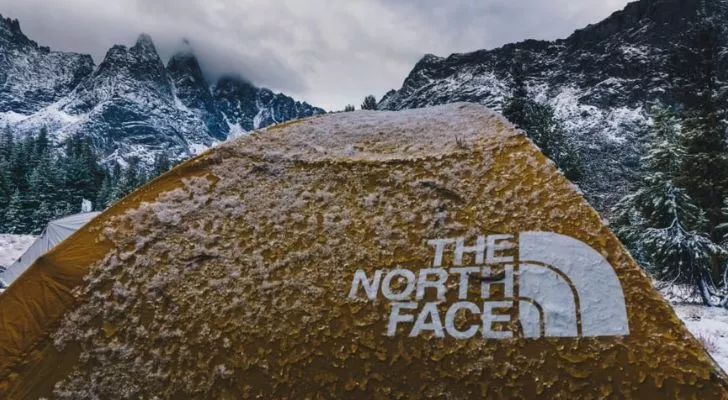Imagine a time when the term “outdoor wear” brought to mind only olive green military surplus items. That was the world before The North Face came into the picture.
Fast forward to today, and The North Face has become synonymous with high-quality outdoor gear and apparel. But did you know that this renowned brand started out as a small retail store in San Francisco?
Stick around as we unveil 25 extraordinary facts about The North Face that will transport you into the heart of its remarkable history!
In 1966, two outdoor enthusiasts, Doug and Susie Tompkins, opened a small mountaineering retail store in San Francisco, California. The store sold high-end climbing and camping gear, but back then, they only sold other brands.
The little store rapidly gained a reputation for selling the best outdoor gear on the West Coast and as a cultural hub for California’s climbing community.
The classic three-arched logo for The North Face represents the iconic Half Dome granite rock formation in California’s legendary Yosemite National Park.
The name The North Face comes from the generalization that the north side of mountains in the Northern Hemisphere is generally considered to be the harshest and most unforgiving to mountaineers.
In 1968, the duo decided to branch out by creating and manufacturing their specialized mountaineering gear.
Through the 60s, The North Face started sponsoring expeditions to some of Earth’s most remote and inhospitable places. This helped develop the mantra “Never Stop Exploring™,” which is still used today.
In the 80s, the North Face branched out to make extreme skiwear. It was the 80s, though, so everything was either pastel or neon colored!
Skip forward to the second half of the 80s, and The North Face was the only supplier in the US offering a fully comprehensive collection of your typical outdoor wear and equipment.
In the 90s, Tekware™ was launched, providing outdoor enthusiasts, athletes, and the like with the best-fitting and most feature-packed sportswear that money could buy.
By the end of the 90s, The North Face’s logo was regularly seen across the US, from ultramarathons to climbing walls.
Also, by 1997, people started wearing The North Face for fashion, not just for sports and outdoor activities.
Just in time for the new century, The North Face finally designed and manufactured its own footwear, which meant the company could equip customers entirely from head to toe for the first time!
In 2005, those wearing The North Face apparel in Prince George’s County, Maryland, US, became robbery victims.
Around 2010, The North Face was seen as a status symbol in South Korea. As a result, children in South Korea seen wearing The North Face would have their clothing stolen or be bullied!
In 2017 The North Face sponsored six world-renowned explorers to Queen Maud Land, Antarctica. Together, they spent a month testing The North Face’s clothing and equipment in harsh climates.
The North Face got in trouble with Wikipedia in May 2019 after their marketing agency was found replacing Wikipedia’s images of popular outdoor locations. Their strategy, which replaced the pictures with photos featuring North Face equipment, backfired immensely.
The North Face is determined to 100% responsibly source the materials for all its clothing, footwear, and equipment by 2030.
Before The North Face was founded, people had to get their outdoor clothing and supplies from military shops. Thanks to the company, customers could finally have outdoor wear that wasn’t olive green.
The North Face revolutionized backpacking by inventing the world’s first internal-frame backpack.
Before The North Face changed the backpacking game, some people went hiking, but the majority of regular folk just went camping.
The company’s tents are so durable that they supply the US Marines with their tent needs.
The North Face brought in almost $4 billion of revenue in 2022, and with that number going up every quarter, only the sky seems to be the limit!
Over 3,500 stores worldwide sell The North Face gear.
The North Face wants to move toward a circular model to see people share, resell, repair, and recycle their clothing.
The company offers “The North Face Renewed,” which provides clothing previously used, and anything that another customer can’t reuse is upcycled through the Remade collection.

From revolutionary inventions to unexpected encounters, The North Face has constantly pushed the boundaries of what’s possible.
Their commitment to responsible sourcing and a vision for a sustainable future further solidify their position as a leader in the industry.
So, whether you’re scaling mountains or embarking on everyday adventures, remember to carry the spirit of exploration and innovation that The North Face embodies.






















